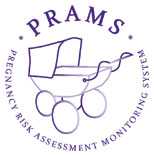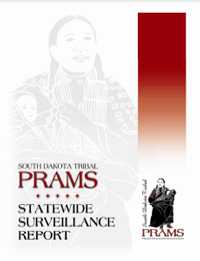Improving Surveillance Systems and Collecting American Indian and Alaska Native Data

In 2005, CDC assessed the feasibility to monitor maternal and infant morbidity among American Indians and Alaska Natives (AI/AN) using available data. This resulted in the report, Data for Surveillance of Maternal and Infant Morbidity Among American Indians and Alaska Natives. According to the report, no single source of existing data is adequate for comprehensive perinatal surveillance, and the availability of AI/AN data at regional and tribal levels is especially limited. The report recommended adjusting the Pregnancy Risk Assessment and Monitoring System (PRAMS) protocol to oversample AI/AN so that sufficient data could be obtained for statistically reliable results.
Pregnancy Risk Assessment Monitoring System (PRAMS)

PRAMS operates in 40 states and New York City, representing 78% of all U.S. live births. It is the only multistate population-based maternal and infant health surveillance system that obtains data from AI/AN mothers. A much smaller proportion of AI/AN women participate in PRAMS when compared with women of other race or ethnicities. Higher response rates among AI/AN mothers are needed to make reliable population estimates, have confidence in survey findings, and develop appropriate actions. To gain a better understanding of AI/AN women’s response patterns to the PRAMS survey, CDC examined characteristics of AI/AN PRAMS participants. Published in 2008, How can PRAMS survey response rates be improved among American Indian mothers? Data from 10 states, [PDF- 161KB] recommended that states collaborate more closely with tribes to boost American Indian contact and response rates.
Tribal PRAMS Survey
 A Tribal PRAMS point-in-time survey in South Dakota was conducted by the Northern Plains Tribal Epidemiology Center (NPTEC) and the Yankton Sioux Tribe in 2007. The NPTEC and Yankton Sioux applied to participate in PRAMS after the Aberdeen Area Tribal Chairmen’s Health Board identified Maternal and Child Health as the highest health priority in the area in response to persistently high rates of infant mortality. The 2007 survey was the first tribally-led PRAMS survey. South Dakota Tribal PRAMS (SDT PRAMS) succeeded in obtaining a >70% response rate among mothers who gave birth to American Indian infants.
A Tribal PRAMS point-in-time survey in South Dakota was conducted by the Northern Plains Tribal Epidemiology Center (NPTEC) and the Yankton Sioux Tribe in 2007. The NPTEC and Yankton Sioux applied to participate in PRAMS after the Aberdeen Area Tribal Chairmen’s Health Board identified Maternal and Child Health as the highest health priority in the area in response to persistently high rates of infant mortality. The 2007 survey was the first tribally-led PRAMS survey. South Dakota Tribal PRAMS (SDT PRAMS) succeeded in obtaining a >70% response rate among mothers who gave birth to American Indian infants.
In 2010, the CDC secured funding to support three PRAMS states (Washington, New Mexico, and Oregon). The purpose was to strengthen collaboration between PRAMS and tribes, and carry out activities to identify influenza and other maternal and infant risk factors among AI/AN people. Some states that are not funded through CDC for Tribal PRAMS projects, like Wyoming and Michigan, have started their own programs. As with the SDT PRAMS model, each state in the project will form a PRAMS Tribal Oversight Committee. Results about AI/AN mothers’ experiences around the time of pregnancy will be provided to the PRAMS Tribal Oversight Committee; to each tribal health board within the state; and to immunization, preparedness, and maternal and child health programs at health departments. Funded states were awarded aid to begin to build PRAMS tribal collaborations in May 2011.
- Page last reviewed: February 8, 2017
- Page last updated: February 8, 2017
- Content source:


 ShareCompartir
ShareCompartir